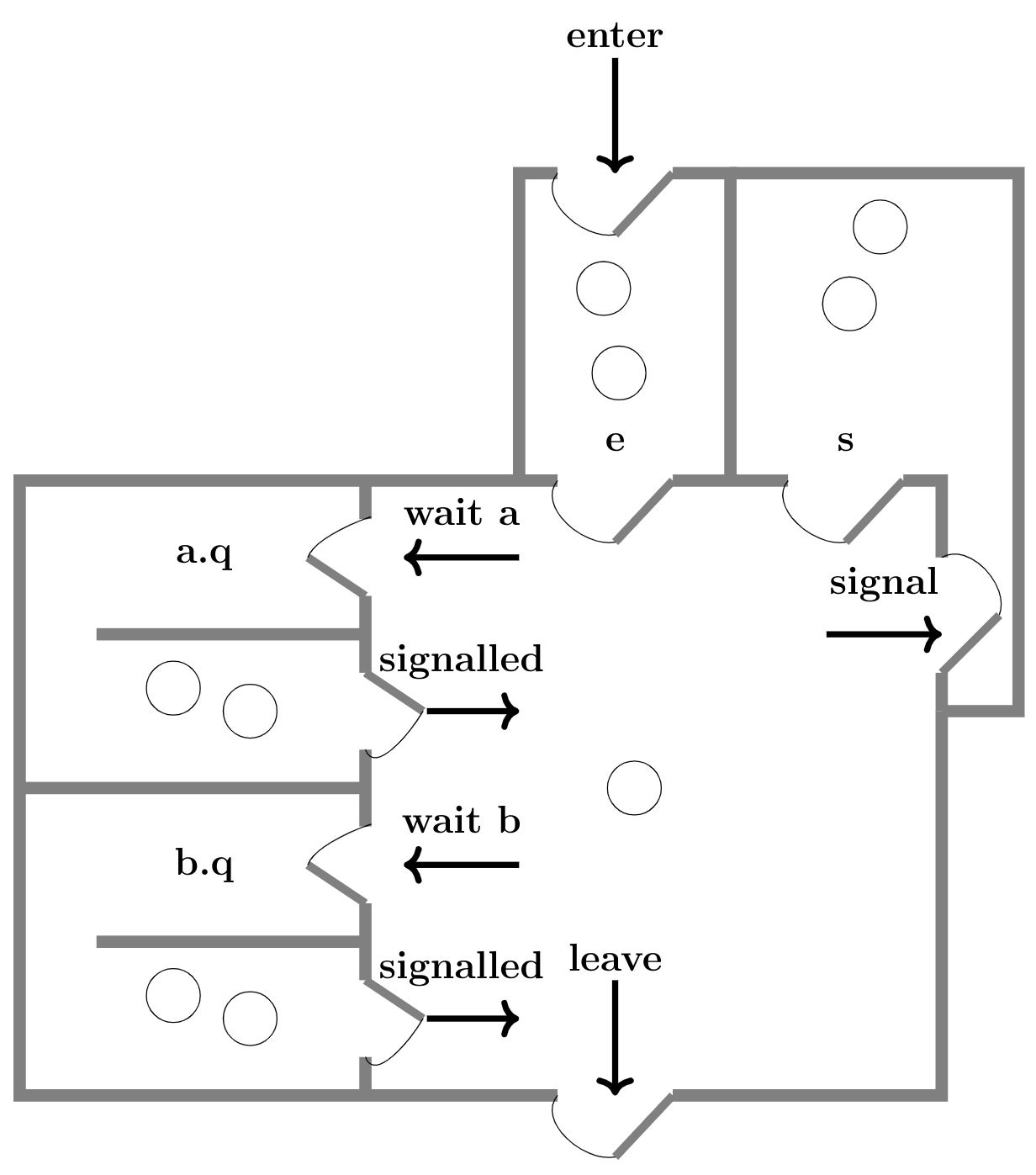A. Circular Wait is one of the conditions for deadlock.
B. To avoid race conditions, the execution of critical sections must be mutually exclusive (e.g., at most one process can be in its critical section at any time).
C. Monitors using blocking condition variables are often called Hoare-style monitors or signal-and-urgent-wait monitors.

D. locality is commonly used to determine the number of assigned pages. The number of pages that meet the requirement of locality is called a working set.$$\begin{array}{|ll|ll|}\hline (a) & \text{Critical region} & (q) & \text{Mutual exclusion} \\ (b) & \text{Wait/Signal} & (p) & \text{Hoare's monitor} \\ (c) & \text{Working Set} & (r) & \text{Principle of locality} \\ (d) & \text{Deadlock} & (s) & \text{Circular Wait} \\\hline \end{array}$$